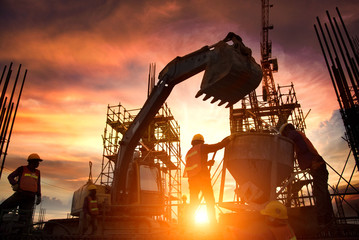
Construction sites can be dangerous and workers face risks every day. Potential hazards are all around when you consider the heavy machinery, tools, chemicals, and scaffolding that workers interact with. Because of these risks, injuries are a common occurrence on construction sites. If you were injured on the job, you may be entitled to compensation. Speak with a Pike County, KY work injury lawyer to discuss representation in your case.
What Are the Most Common Injuries in the Construction Industry?
Despite safety protocols attempting to prevent accidents, injuries are a common occurrence on construction sites. Some happen more often than others, but all can result in a painful or traumatic experience for the victim. Some accidents that may result in injury include the following.
- Falls
- Slips and trips
- Falling objects
- Machinery or tool accidents
- Structural collapses
- Electrocutions
- Fires and explosions
- Overexertion
- Car or auto accidents
- Exposure to toxic chemicals
Unfortunately all of the above are occupational hazards that workers may experience on a construction site. If any do occur, they can lead to injuries that range from minor and painless to severe problems.
Injuries that a construction worker may sustain include broken bones, fractures, knee injuries, ankle injuries, back injuries, spinal cord injuries, burns, electrocution, concussions, traumatic brain injuries, eye injuries, internal bleeding or other internal injuries, amputations, carpel tunnel syndrome, skin disease, cancer, and more. Some serious accidents can even result in death.
How Can I Stay Safe on a Construction Site?
It is probably surprising that with the expansive safety protocols in place, the above injuries still take place. To avoid the listed accidents and accompanying injuries, there are some safety tips you should consider when on a construction site.
- Wear safety gear: Make sure you are wearing PPE (personal protective equipment) at all times on site. That can include a hard hat, headphones, gloves, safety glasses, a harness, or high-visibility clothing. These can be important in protecting against physical damage.
- Keep your head up: Simply being aware of your surroundings can help prevent an accident. Pay attention to what is going on around you so you can avoid hazards.
- Keep your work area clean: While construction can be messy, keeping an organized and clean space can help avoid people tripping over debris or tools.
- Participate in safety training: It may seem unnecessary, but when working on a high-risk project, training is important to understand dangers and how to avoid them.
- Follow proper procedures: Obey signs and safety procedures during work. Do not cut corners or try things a different way.
- Be prepared: Although you want to avoid emergencies, be prepared for them anyway. Accidents, natural disasters, hazardous spills, or fires can happen out of nowhere. Make sure you have a response plan and all workers are informed of what to do.
- Follow OSHA guidelines: OSHA (Occupational Safety and Health Administration) has guidelines set to cover various issues and protect employees from hazards. Follow their policies to prevent accidents and injuries.
- Communicate: Communication is paramount in avoiding accidents. Clear communication between employers and workers can mitigate risks.
